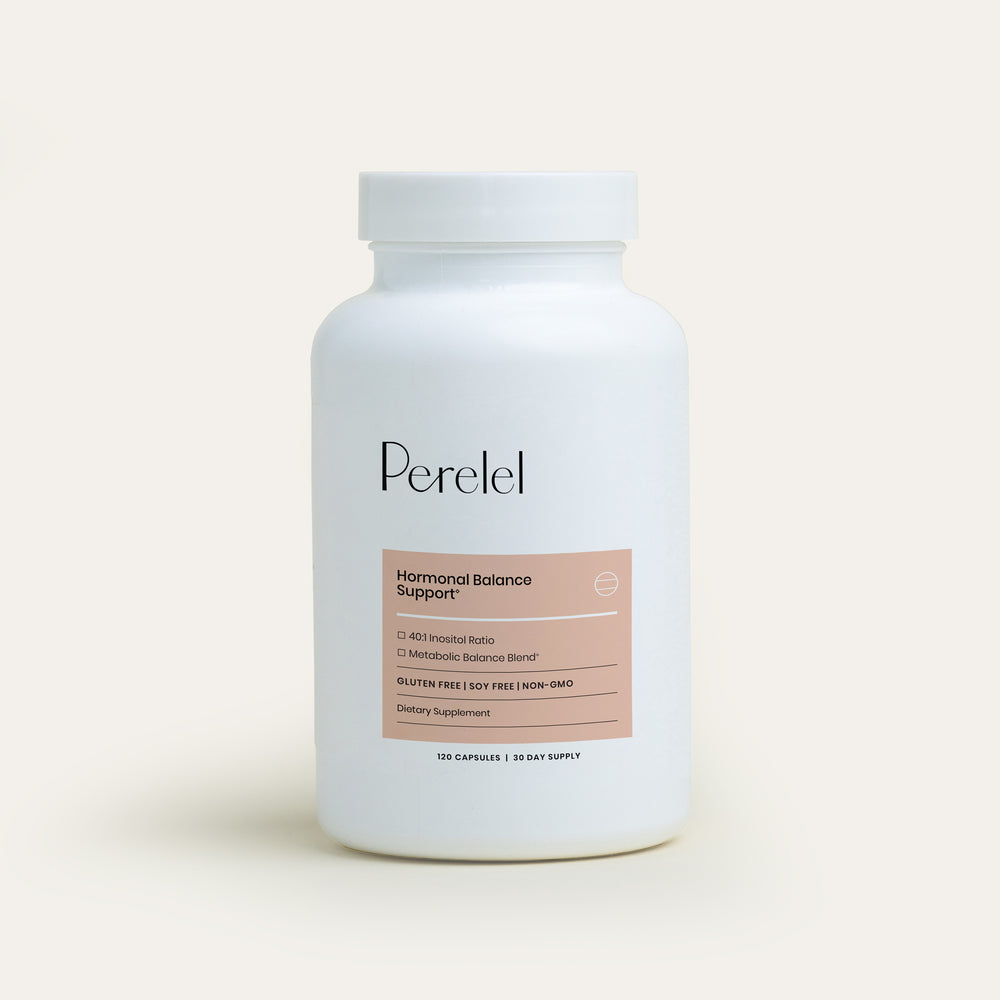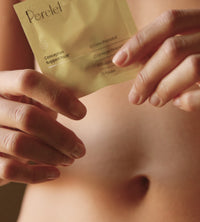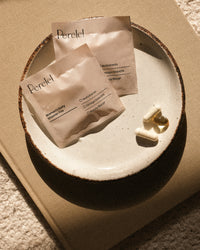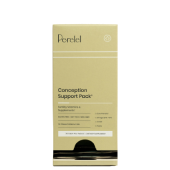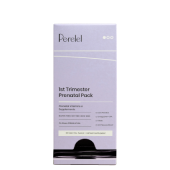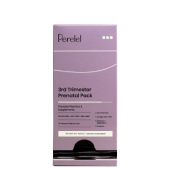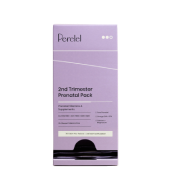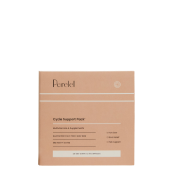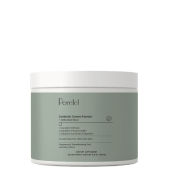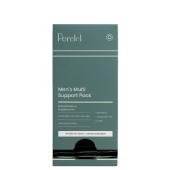When it comes to contraception, understanding your options is a powerful thing. And there are a lot of them: Perhaps you'd prefer a "set it and forget it" approach to preventing pregnancy. Or maybe you'd like to avoid hormonal methods of birth control. No matter your needs, there are a variety of birth control methods that can align with your lifestyle. (Over a dozen, in fact.)
As always, your doctor is your best resource to aid you in deciding what birth control method is right for you and/or your partner. But let's dive into your options below.
The different types of birth control
There are over a dozen different birth control methods. They fall into five main categories:
Long-acting: These methods last for years. There are both hormonal and non-hormonal methods, including the copper IUD.
Short-acting: You have to remember to take or replace this kind, including the pill.
Permanent: Sterilization and vasectomy are forever (except in the rare case of a reversal).
Barrier methods: These methods, including condoms, block sperm.
Fertility awareness: This one’s all about knowing which days you can get pregnant.
Now that you understand the main categories, let's dive into some of the specific options.
Non-Hormonal Birth Control Options
Condoms
Condoms are one of the most popular types of birth control. They’re also a great way to prevent sexually transmitted infections.
There are two kinds: internal, which are worn inside the vagina, and external, which are worn snugly over the penis. External condoms keep sperm from getting into the vagina. Internal condoms keep sperm from meeting an egg. They’re made of thin, stretchy material—either latex, lambskin, nitrile, polyurethane, or polyisoprene.
Typically, external and internal condoms are 87 and 79 percent effective, respectively. If a condom breaks, you can get Plan B at your local pharmacy.
Withdrawal (aka the pull-out method)
Withdrawal, or the “pull-out method,” is probably the oldest form of birth control. It involves someone with a penis pulling out of the vagina before ejaculating.
This method is about 80 percent effective with typical use. It has to be done with the right timing, every single time.
Note: after withdrawal, it's crucial to pee and wash the penis before having sex a second time.
Diaphragm
A diaphragm is a small, domed device made of silicone or latex. You put it inside your vagina before sex and can leave it in for up to 24 hours. It covers the cervix to stop sperm from reaching an egg.
You can only get a diaphragm by prescription. Keep in mind: it’s not meant as a standalone birth control method. Instead, it’s used with spermicide—with about 84 percent effectiveness.
There are two types of diaphragms: the one-size-fits-all version or one that is custom-fitted to your body.
Another similar option is the cervical cap, which is smaller than a diaphragm.
Spermicide
Spermicides come in a bunch of different forms: creams, films, foams, gels, and suppositories. These all are inserted into the vagina and have the same ingredient: Nonoxynol-9, which stops sperm from moving towards an egg.
Spermicide is easy to get because you don't need a prescription. After applying it, you need to make sure to wait the recommended time before having sex. It’s re-applied every time you have sex.
Spermicide alone isn’t very good at preventing pregnancy. Typically, it has only a 72 percent effectiveness rate. It’s best used with another form of birth control.
Vasectomy
Vasectomy is birth control for people with penises. It’s an operation that keeps semen from leaving your body. Surgery is done through a small incision or hole and two tubes in the scrotum (a.k.a. the vas deferens) are closed. You still make semen, but your ejaculate doesn’t have sperm in it. Instead, the sperm are absorbed by your body. After a waiting period of three months, it’s 99.9 percent effective at preventing pregnancy.
Fertility Awareness
Fertility awareness methods, or FAMs, prevent pregnancy by tracking ovulation and determining when you’re fertile. You can:
-
Track your cycle on a calendar.
-
Check your cervical mucus every day.
-
Record your temperature every morning before getting out of bed.
-
Combine all of the above, which is most effective.
The idea is to avoid unprotected sex when you’re most likely to get pregnant. Typically, they’re 76 to 88 percent effective.
You can learn to do FAM with a certified instructor or you can use an FDA-approved app, like Natural Cycles.
Let us personalize your vitamin
routine in 60 seconds.

What are your
stage-specific needs?
Hormonal Birth Control Options
Intrauterine Device (IUD)
An IUD, or intrauterine device, is a tiny T-shaped piece of plastic or copper. A doctor inserts it into your uterus. It keeps sperm from fertilizing any eggs.
There are hormonal as well as non-hormonal options. The plastic kind releases a small amount of the synthetic hormone progestin, while the copper IUD doesn’t have any hormones.
One of the best things about IUDs? They can be left in for anywhere from three to 12 years, but they can always be taken out earlier. Also, they’re typically 99 percent effective.
Birth Control Pills
You take the birth control pill every day. It keeps your ovaries from releasing eggs and thickens cervical mucus, which blocks sperm. Typically, the pill is 93 percent effective at preventing pregnancy.
There are a bunch of different brands out there but they all fall into two categories. Combination pills have both estrogen and progestin. Progestin-only pills don’t have any estrogen.
The pill prevents pregnancy on two fronts:
-
It has synthetic hormones that keep the ovaries from releasing eggs.
-
It thickens cervical mucus, which blocks sperm from reaching an egg.
It does this mostly by releasing progestin, a synthetic form of progesterone. Some pills also have ethinylestradiol, a synthetic version of estrogen.
The synthetic hormones in contraceptives are not the same as naturally occurring hormones and affect the body differently.
“When people are taking birth control pills, they’re essentially suppressing the message between the brain and the ovaries. So, the primary purpose of birth control pills is to suppress ovulation,” explains Dr. Caitlin O’Connor, ND. explains. “Our ovaries are essentially going into hibernation."
“One thing to remember when people are on birth control pills, is that even though they’re having a uterine lining shedding event–they’re having a bleed every month—they’re not having true menstrual periods because they’re not ovulating.”
Shop the Article:
Implants and Shots
The birth control implant is a tiny rod that’s inserted into the skin of your upper arm. It has progestin, which stops your ovaries from releasing eggs (a.k.a. ovulation) and thickens your cervical mucus. It can be left in for up to five years, depending on your body mass index (or BMI).
Birth control shots, like Depo-Provera, also have progestin. Unlike the implant, the shot lasts for only three months.
The Patch
It’s a thin plastic square that sticks to your skin and gives off estrogen and progestin to prevent ovulation and thicken your cervical mucus.
You have to change the patch at home once a week. It’s typically 91 percent effective.
Birth Control Ring
It’s a small, bendable ring that releases estrogen and progestin to prevent ovulation and thicken cervical mucus.
You insert it yourself into your vagina. After three weeks, you can take it out so that you have a withdrawal bleed, which is like a period. After the fourth week, you insert a ring again.
Typically, it’s 91 percent effective.
Vaginal Gels
Vaginal gels are a newer non-hormonal birth control option. It works by lowering your vaginal pH, which stops sperm from reaching an egg.
One vaginal gel option, Phexxi, comes in pre-filled applicators. You insert it like you would a tampon up to one hour before sex. You have to re-apply it every time you have sex. Typically, it’s 86 percent effective.
Some doctors recommend using a vaginal gel in combination with other birth control options, like condoms, a diaphragm, or withdrawal.
What are potential side effects of being on hormonal birth control?
“It's really variable and depends on the type, age and risk factors for the patient," Dr. O’Connor advises.
For example: “Oftentimes the side effects of oral birth control are minimized or overlooked," she says. "Some common concerns are nausea, headaches, decreased libido, vaginal dryness, mood changes and changes to weight, hair and skin.”
Your doctor will be able to keep you informed about potential side effects to expect with each birth control method.
How soon before you’re ready to conceive should you get off hormonal birth control?
“I generally recommend that people stop their birth control at least a year to two years before they want to try to conceive,” Dr. O’Connor advises. “It can take some people up to a full year–even a little longer–for their brain and ovaries to establish a rhythm and a conversation again. Oftentimes we need to be patient,” she continues.
That said, with most hormonal birth control methods, it's safe to try conceiving right away. Check in with your physician if you are deciding to transition off of hormonal birth control with the intention to conceive a pregnancy.
Sign up to receive doctor-backed, stage-specific content in your inbox each week.
theFolio in Your Inbox
This article is for informational purposes only. It is not, nor is it intended to be, a substitute for professional medical advice, diagnosis, or treatment and we recommend that you always consult with your healthcare provider. To the extent that this article features the advice of physicians or medical practitioners, the views expressed are the views of the cited expert and do not necessarily represent the views of Perelel.





